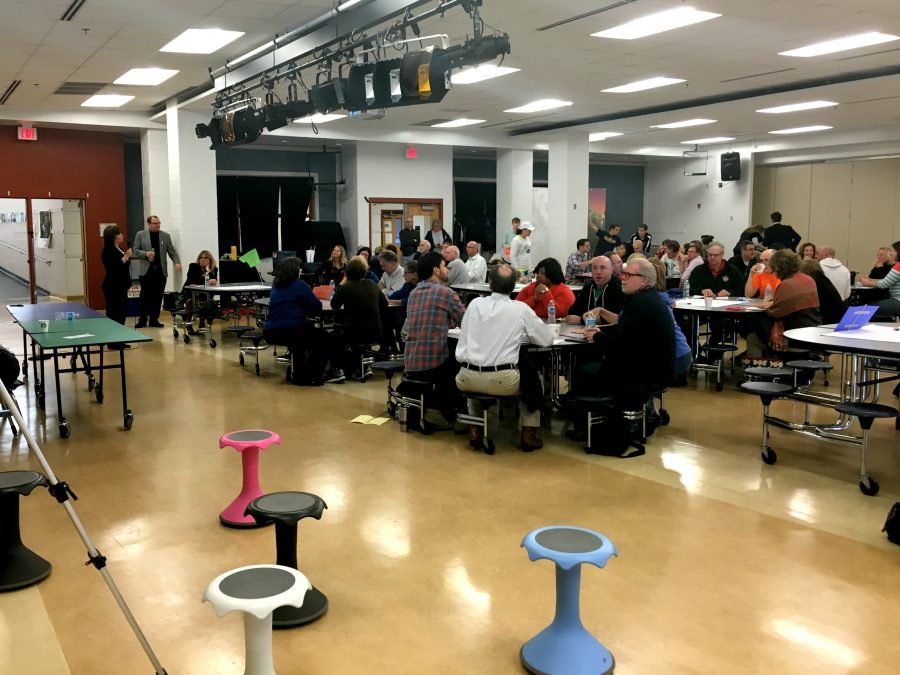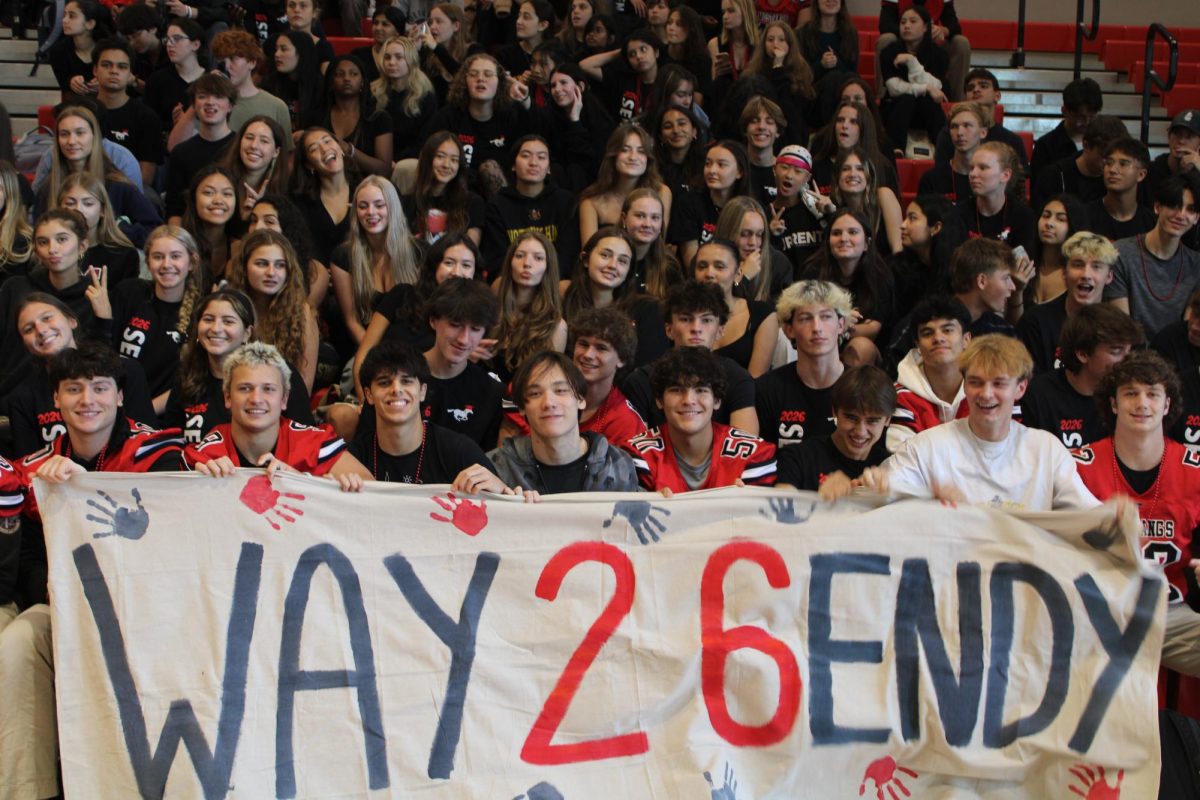
While Falls Church public schools are widely praised, there’s something off-putting about dodging the recycling bins catching ceiling leaks in the bathrooms.
Students and community members feel that GM building needs to be rebuilt or at least renovated. The current high school was built in 1952, and after over sixty years, the building is outdated and becomes more run down every year. Currently, the building has small classrooms, old lockers, sinks and water fountains that don’t work, and the occasional leaky ceiling. Several classes are held outside in trailers and GM is running out of space as shown in a March 2015 Lasso article.
A presentation and Q&A session about the plans and ideas for a new building was held at Mary Ellen Henderson Middle School on Saturday October 17. The presentation was hosted by a panel of speakers; including architects, environmental building and energy professionals, and George Mason High School principal Tyrone Byrd. The panel discussed their hopes for the new building – the design, the campus, the technology, and its use of energy.
Instead of a traditional classroom setting, VMDO architect Doug Gehley wants a layout that encourages student collaboration and conversation. Like current students, he and other panel members think spaces like alcoves, courtyards, and small study areas are good for students.
Click here to read the full summary report of the session, as published by FCCPS Communications Department.
“We need spaces that provide new learning opportunities,” Gehley said, “Make them comfortable, make them interesting, and make them fun.”
Students share these interests for a building with more small spaces.
“We need those areas for younger grades, too, not just juniors and seniors,” said sophomore, Celine Diz. “It would be really nice to have spots like that with more trees and grass.”
Along with wanting a new layout and design, speakers were interested in making the new building as energy efficient as possible. With changing technology, schools are beginning to look to the possibility of being ‘net zero,’ meaning that the school produces the same amount of energy that it uses through solar, geothermal, and wind power. Discovery Elementary School in Arlington, which was completed in September 2015, is the first net zero school in Virginia.
Not only does designing a school as net zero reduce its carbon emissions and its impact on the environment – it also saves money in the long run. A regular school would cost about 3.3 million dollars in energy bills over 20 years, and Discovery Elementary School is estimating their costs around 1.9 million.
According to panel speaker Michael Mondshine from WSP Parsons Brinckerhoff, the project would not be easy. “I think we have an extraordinary opportunity, a once-in-a-generation opportunity, for this new building. However, this is not a simple undertaking.” said Mondshine.
The school would be expensive to build, and depending on its energy usage and production, it could need to get permits and space for piping and other energy equipment.
Students at the panel brought up what they wanted to see, including facilities like an indoor track, parking space, and a pool for the swim team. While students were supportive of the green building ideas, they were more concerned with the quality of the instruction and the design of the school.
Plans are still tentative and the city doesn’t plan to build a new school until around 2020, meaning current Mason students won’t be here to see it built. Despite the many logistical and design details to be considered, there are still many important factors.
“We start with the building,” said green building council member Josh Lasky, “but really the focus is on the academics.”










Anonymous • Apr 26, 2018 at 4:26 PM
I think the most important thing are the humans occupying the building, the teachers and the students — the quality of the teachers and their teachings and the quality of what, and how the students are learning. I am pointing this out as it seems people lose sight of this and are the constant shift or pressure into focusing the materialistic aspects. Personally I would rather give the money to teachers to increase quality of teaching than putting money into a building.